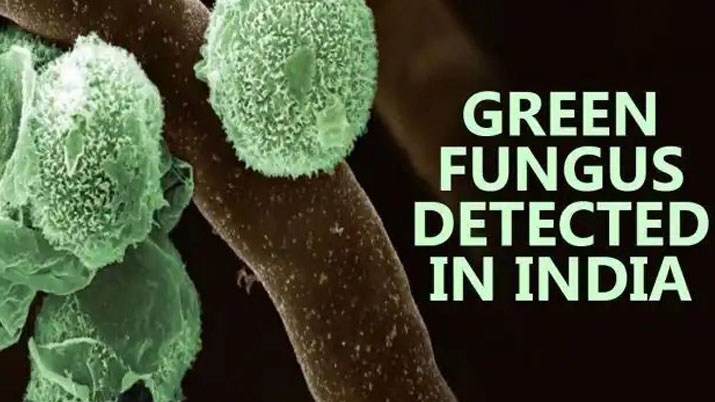Monsoon is synonymous with ‘greenery,’ and the country is almost experiencing monsoon in some of its parts. Well, this time, trapped in the vicious cycle of the pandemonium pandemic, the word ‘green’ took a rather unexpected turn. A patient recovering from Covid was diagnosed with high concentration of ‘Aspergillosis’. This 34-year-old’s condition from Madhya Pradesh was the first case ever recorded of the new indentified ‘Green Fungus’ also known as ‘Aspergillosis’.
The first ever type of fungus that was spotted in the country after the onset of the pandemic was Mucormycosis or Black fungus, which affected more than 31,000 people and claimed at least 2,100 lives so far, according to local media reports. While the black fungus infections are caused by a group of moulds called mucormycetes, the green fungus infection is caused by a common mould called aspergillus that occurs indoors and outdoors. Most people breathe in aspergillus spores every day without getting sick, but those with weak immune systems or lung diseases are at a higher risk of contracting aspergillosis, according to the US Centres for Disease Control and Prevention.
Doctors at the Sri Aurobindo Institute of Medical Sciences (SAIMS) in Indore, the capital of Madhya Pradesh, said the patient who developed aspergillosis had battled Covid-19 for two months, with severe lung involvement, and spent almost a month in intensive care. “He started showing signs of improvement so he was discharged with home oxygen but after going home, in a week’s time he started developing high-grade fever, nosebleeds and became extremely sick,” Dr Ravi Dosi, the head of the Department of Chest Diseases at SAIMS reported.
Doctors at first suspected it to be a case of mucormycosis.
“We were giving him medication on line of black fungus because of the symptoms…but he showed very poor response to it. We did a biopsy and special blood tests, by the time reports started trickling in, it became evident that he was suffering from aspergillosis,” Dr Dosi said.
“We have the largest Covid-19 health facility in central India and haven’t seen such a case till now. It is pretty alarming as we were till now treating patients with such symptoms for mucormycosis,” he said.
He said the green fungus infection was not uncommon and was treatable, but “we have never found it with such ferocity … It could be because of his extremely weak condition.”
Experts, however, are not unanimous on fungus colour coding. “There is no colour coding of fungal infection. The only thing is that it is aspergillus fungus and mucormycosis,” says a doctor.
Fungal infections don’t lead to changed colour of the body; the naming of a virus in such a manner is done because the colour is seen in lab culture during testing, says another doctor.
Fungus exhibits colour in their culture. All of them black, yellow, green and white fungus, are basically specimens of cinderella, mucormycosis and aspergillus. Mucormycosis exhibits the colour black, cinderella gives white and aspergillus gives green and yellow colour.
The emergence of fungal infections among Covid-19 patients including cases of white and yellow fungus have placed additional strain on a healthcare system that was brought to its knees by the second wave of coronavirus, with more than 400,000 new cases each day at one point.
More than 170,000 people died and more than 20 million were infected by the virus since March as the hospitals across India struggled with shortages of medicines, oxygen and hospital beds.
Aspergillosis, is caused by a common mold, which is a type of fungus that lives indoors and outdoors. The infection may cause high fever and nose bleeding. Green fungus is also suspected to cause severe weight loss and weakness. Inhaling Aspergillus spores isn’t harmful for those who have a healthy immune system. But for those with weakened immune systems, breathing it in may cause infection in the lungs or sinuses, which can then affect other parts of the body. If the infection goes untreated, it can cause infectious pneumonia. Though, it is not contagious. The causes of the fungus were narrowed down to
- Decaying vegetation
- Stored grain
- Compost piles
- Marijuana leaves
The symptoms if the fungus include:
- Fever
- Wheezing
- Reduced ability to smell
- Fatigue
- Shortness of breath
- Cough
- Runny nose
- Headache
- Bones vision difficulties
- Weight loss
- Less urine
- Pain in chest
- Blood in urine
According to doctors, rare fungal infections can be prevented by keeping good hygiene levels, and oral and physical cleanliness. People should avoid going to areas with a lot of dust and stored contaminated water.


